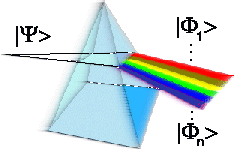Rusek M., Orłowski A.
Anderson localization of electromagnetic waves in random arrays of dielectric cylinders confined within a planar metallic waveguide is studied. The disordered dielectric medium is modeled by a system of randomly distributed 2D electric dipoles. An effective theoretical approach based on the method of images is developed. A clear distinction between isolated localized waves (which exist in finite media) and the band of localized waves (which appears only in the limit of the infinite medium) is presented. The Anderson transition emerging in the limit of an infinite medium is observed both in finite size scaling analysis of transmission and in the properties of the spectra of some random matrices. The sound physical interpretation of the obtained results suggests deeper insight into the existing experimental and theoretical work.
Acta Phys. Pol. A vol. 109 (1), 109-119 (2006) [KK, 2/2]
Jan 14, 2006
Formation of soliton trains in Bose-Einstein condensates by temporal Talbot effect
K. Gawryluk, M. Brewczyk, M. Gajda and J, Mostowski
We study the formation of matter-wave soliton trains in Bose–Einstein condensates confined in a box-like potential. We find that the generation of 'real' solitons understood as multipeak structures undergoing elastic collisions is possible if the condensate is released from the box into the harmonic trap only within well-defined time intervals. When the box-like potential is switched off outside the existing time windows, the number of peaks in a train changes resembling missing solitons observed in recent experiment (Strecker et al 2002 Nature 417 150). Our findings indicate that a new way of generating soliton trains in condensates through the temporal, matter-wave Talbot effect is possible.
J. Phys. B: At. Mol. Opt. Phys. 39 No 1
We study the formation of matter-wave soliton trains in Bose–Einstein condensates confined in a box-like potential. We find that the generation of 'real' solitons understood as multipeak structures undergoing elastic collisions is possible if the condensate is released from the box into the harmonic trap only within well-defined time intervals. When the box-like potential is switched off outside the existing time windows, the number of peaks in a train changes resembling missing solitons observed in recent experiment (Strecker et al 2002 Nature 417 150). Our findings indicate that a new way of generating soliton trains in condensates through the temporal, matter-wave Talbot effect is possible.
J. Phys. B: At. Mol. Opt. Phys. 39 No 1
Subscribe to:
Comments (Atom)
